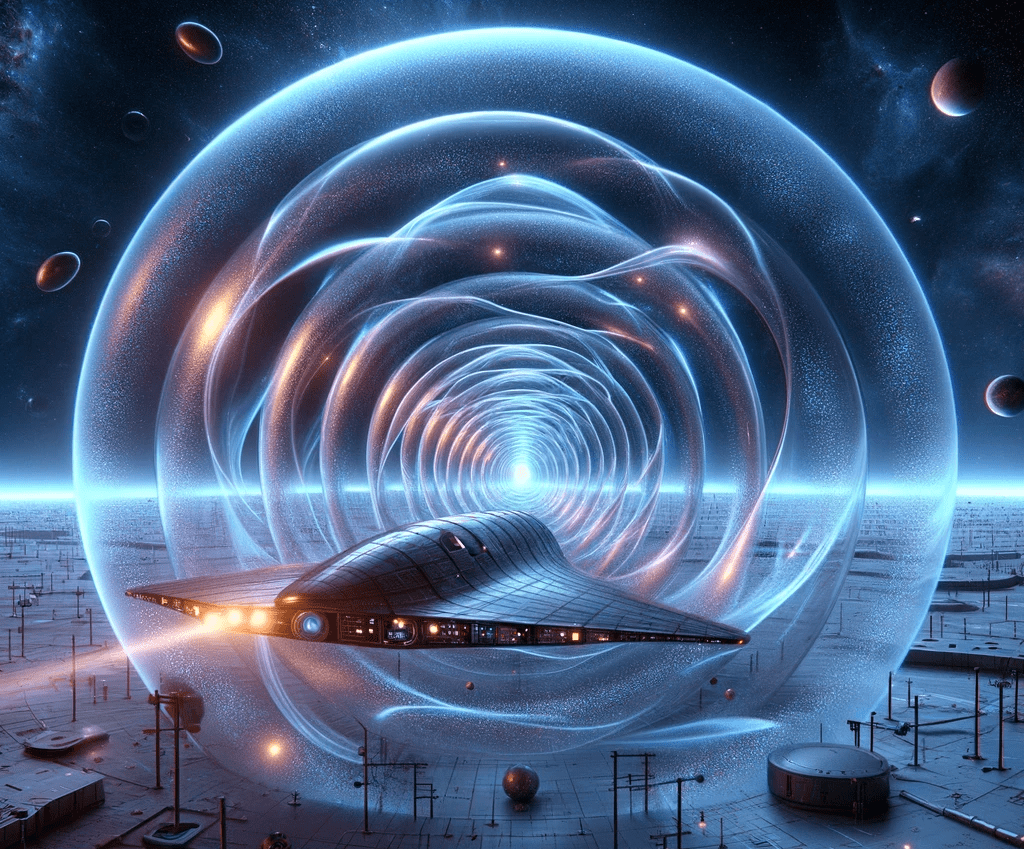Warp Bubble

Warp bubble, a concept rooted in theoretical physics, posits the possibility of faster-than-light travel by manipulating spacetime itself. First proposed by Mexican theoretical physicist Miguel Alcubierre in 1994, the Alcubierre warp drive describes how a spacecraft can travel vast distances by contracting space in front of it while expanding space behind it. This idea has captivated both scientists and science-fiction enthusiasts alike, as it offers the tantalizing prospect of traversing the cosmos without violating the speed limit imposed by Einstein’s theory of relativity.
Miguel Alcubierre is a Mexican theoretical physicist known for his significant contributions to the field of general relativity. He was born on March 28, 1964, in Mexico City, Mexico. Alcubierre earned his Bachelor’s degree in Physics from the National Autonomous University of Mexico (UNAM) and went on to obtain a Ph.D. in Physics from the University of Wales, Cardiff, in 1994.
The warp bubble works by creating a region of spacetime, wherein the spacecraft is essentially stationary relative to the space inside the bubble. As the bubble itself moves through space, it carries the spacecraft along with it, thus avoiding the relativistic effects that would occur if the craft were moving through spacetime at high speeds. This movement is facilitated by the application of a theoretical form of energy called “exotic matter” or “negative energy,” which has the property of counteracting gravity and allowing spacetime to be manipulated. The result is a “warping” of spacetime, enabling the craft to travel faster than light when compared to an external observer.
Although it seems to defy Einstein’s theory of relativity, it does not actually violate any fundamental laws of physics. In 1994, Alcubierre published a paper titled “The warp drive: hyper-fast travel within general relativity” in the journal Classical and Quantum Gravity, outlining the mathematical basis for his concept. The proposed warp drive would not require the spacecraft to move faster than light within its local frame of reference; rather, it manipulates spacetime itself to achieve apparent superluminal travel.
A second fascinating fact is that NASA has already dedicated resources to exploring the potential of warp drive technology. In 2012, physicist Harold “Sonny” White, who works at NASA’s Advanced Propulsion Theme Lead for the NASA Engineering Directorate, announced that he and his team were conducting experiments to test the feasibility of warp bubble technology. White’s research aimed to create and detect a microscopic instance of a warp bubble using advanced interferometry techniques (Source: NASA).
A third intriguing fact about warp bubble theory is that it has inspired an entirely new field of research in theoretical physics called “metamaterials.” These are artificially engineered materials designed to manipulate electromagnetic waves and light in ways that natural materials cannot. Metamaterials are being studied for their potential applications in cloaking devices, superlenses, and other advanced technologies that could make warp drive a reality (Source: Scientific American).
Experts in the field of theoretical physics, such as Dr. Kip Thorne and Dr. Michio Kaku, have discussed the potential of warp drive technology in their works. In his book “The Science of Interstellar,” Thorne explores the physics of wormholes and warp drive, providing a detailed explanation of how such technologies might work. Similarly, in “The Future of Humanity,” Kaku envisions a future where humans are capable of interstellar travel using warp drive technology.
Several books have explored the concept of warp bubbles and their potential implications, such as “Physics of the Impossible” by Dr. Michio Kaku and “The Alcubierre Drive: The Warp Drive from Star Trek to Reality” by Dr. Gerald Versluis. These books look into the scientific and technological challenges associated with warp drive and offer insights into the feasibility of such a system.
The New York Times published an article in 2012 titled “Warp Speed Ahead? A NASA Physicist’s Quest to Outpace Light,” which highlights the work of Harold White and his team at NASA, who are researching the feasibility of warp drive technology. Another example is a 2016 article in the UK’s The Guardian, titled “The impossible dream: how a scientist is working on a warp drive,” which details the challenges and advancements in the field of warp drive research.
The warp bubble concept, first proposed by Miguel Alcubierre in 1994, has generated significant interest in the scientific community and beyond. By manipulating spacetime, it offers the prospect of faster-than-light travel without violating the fundamental laws of physics.


